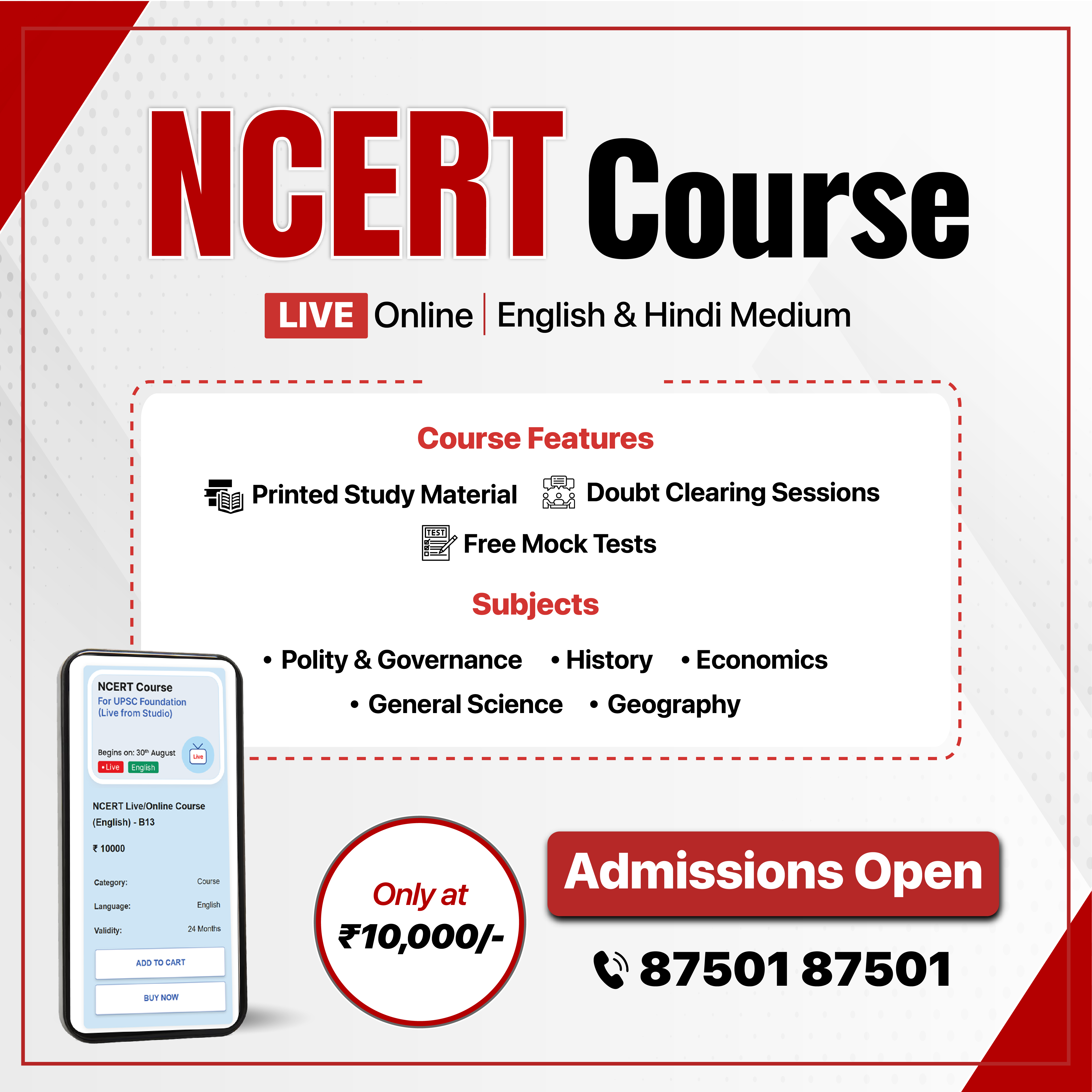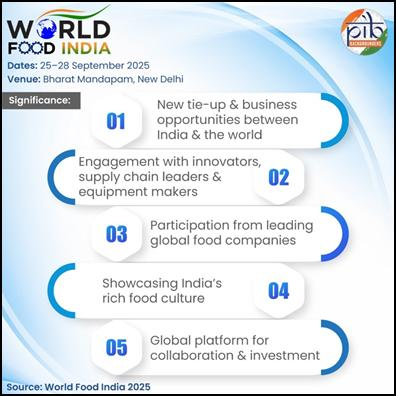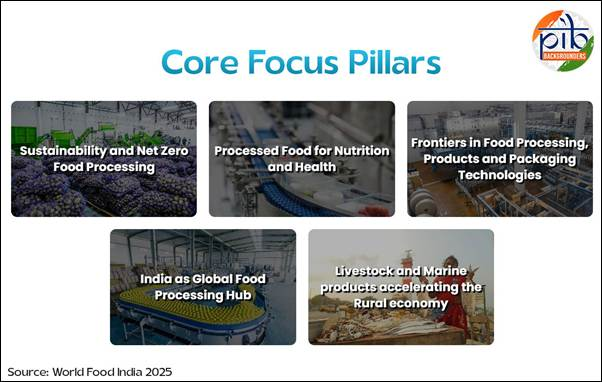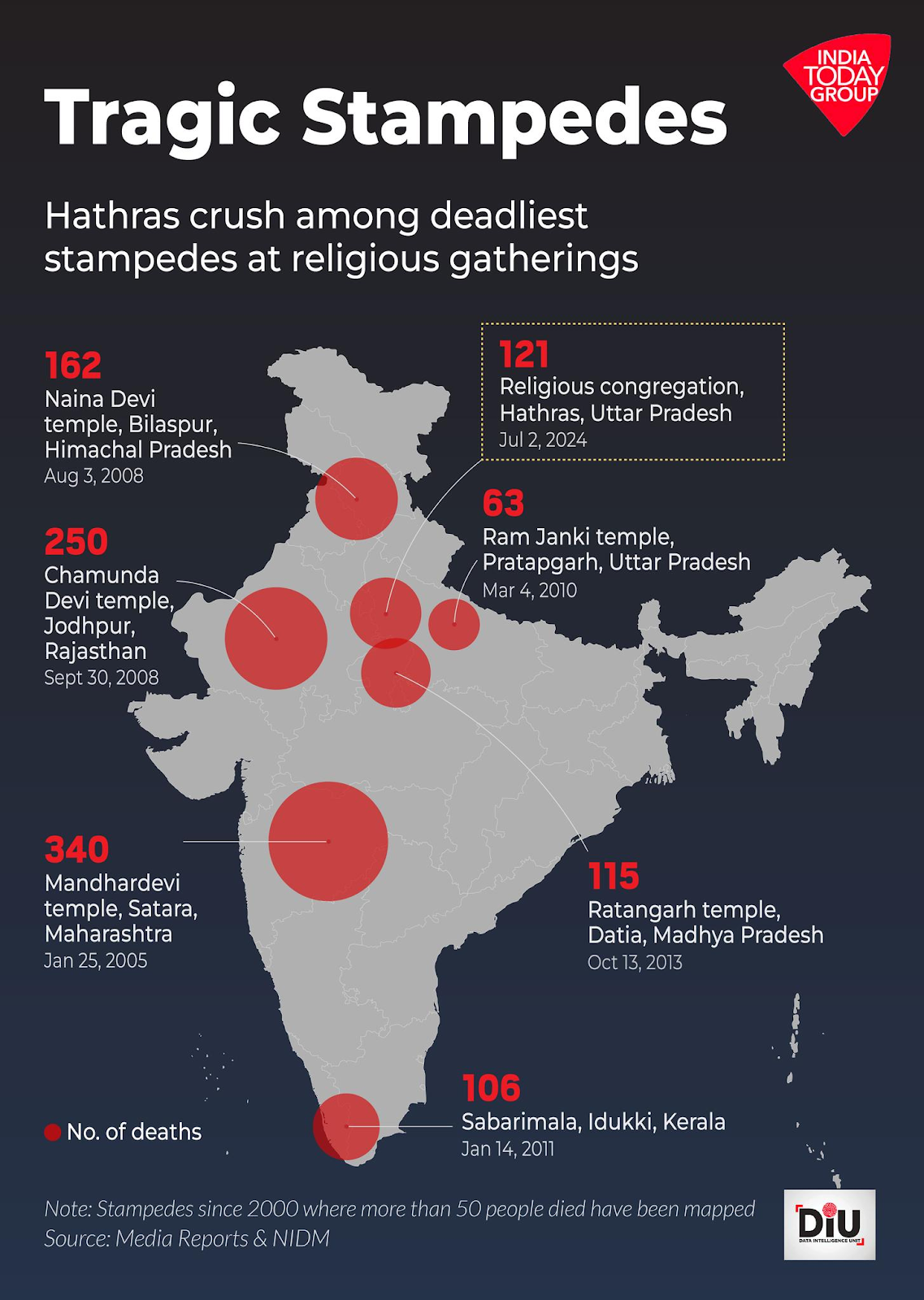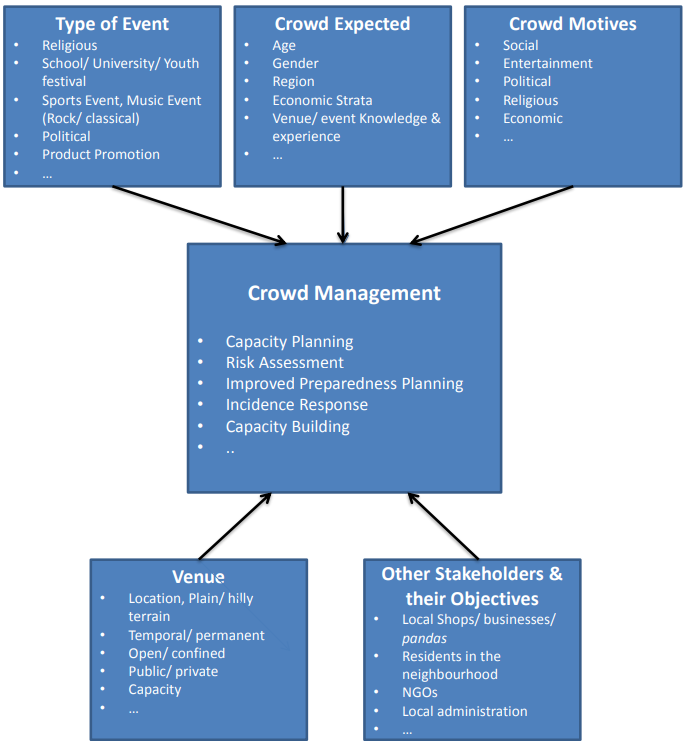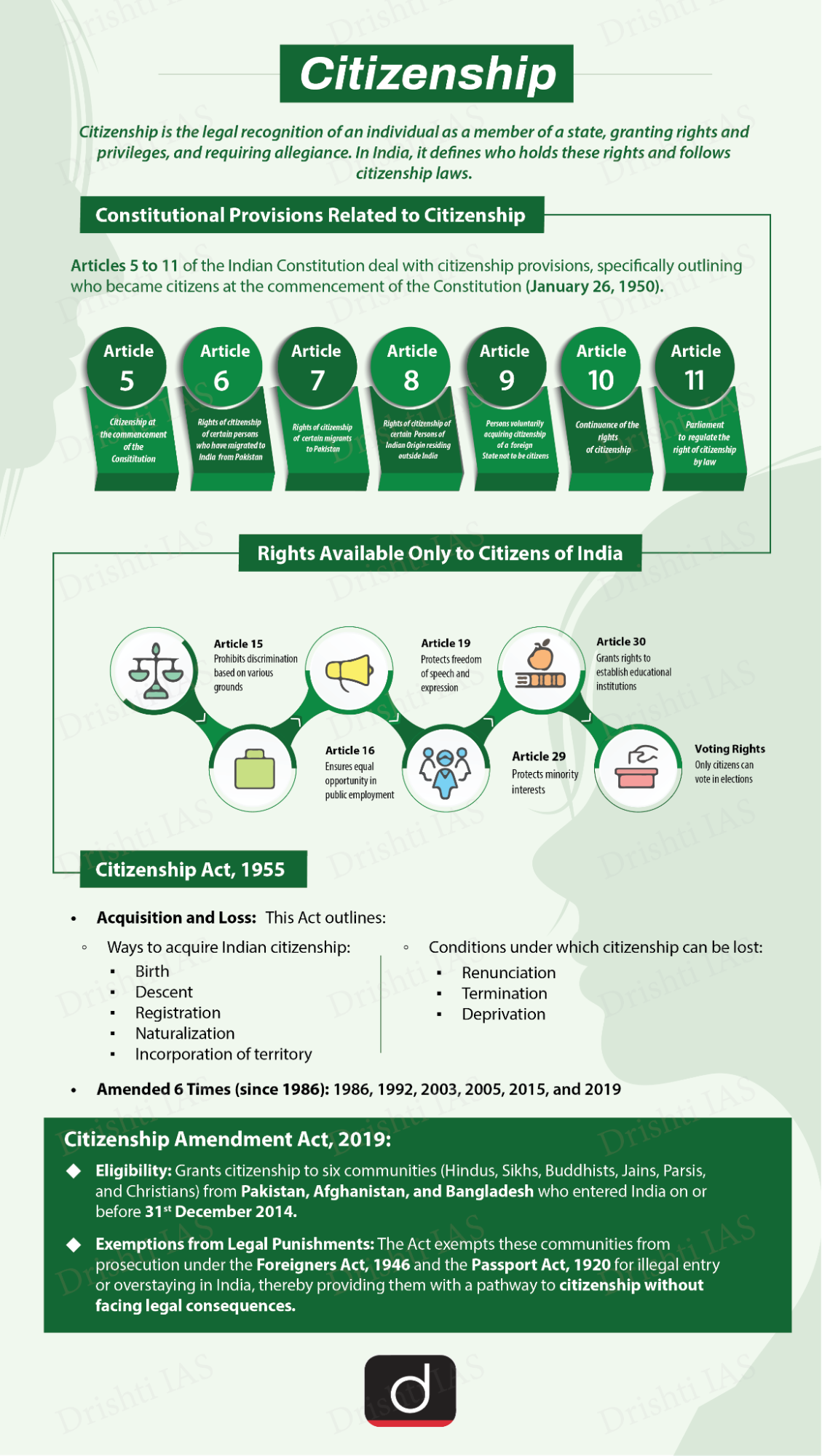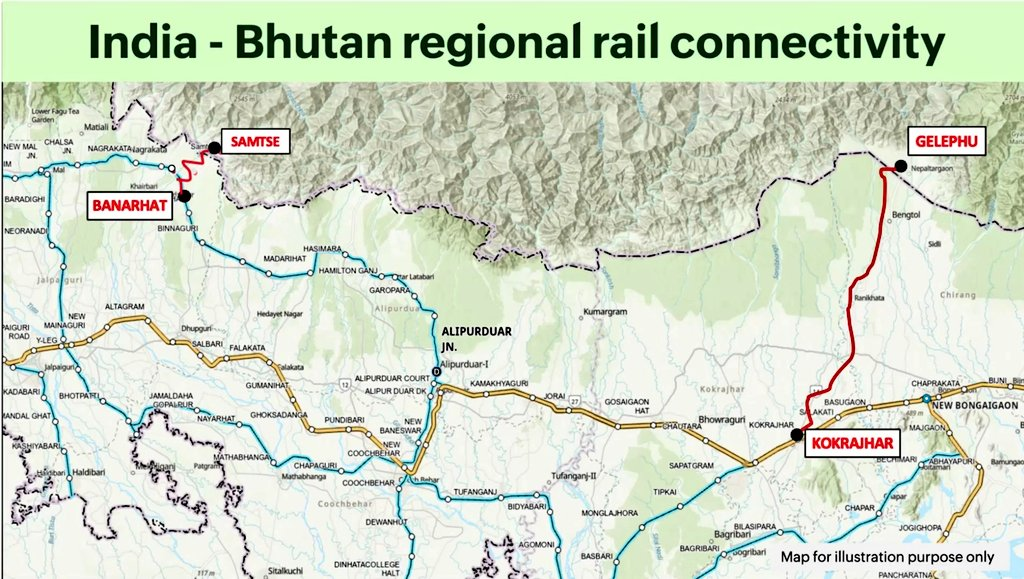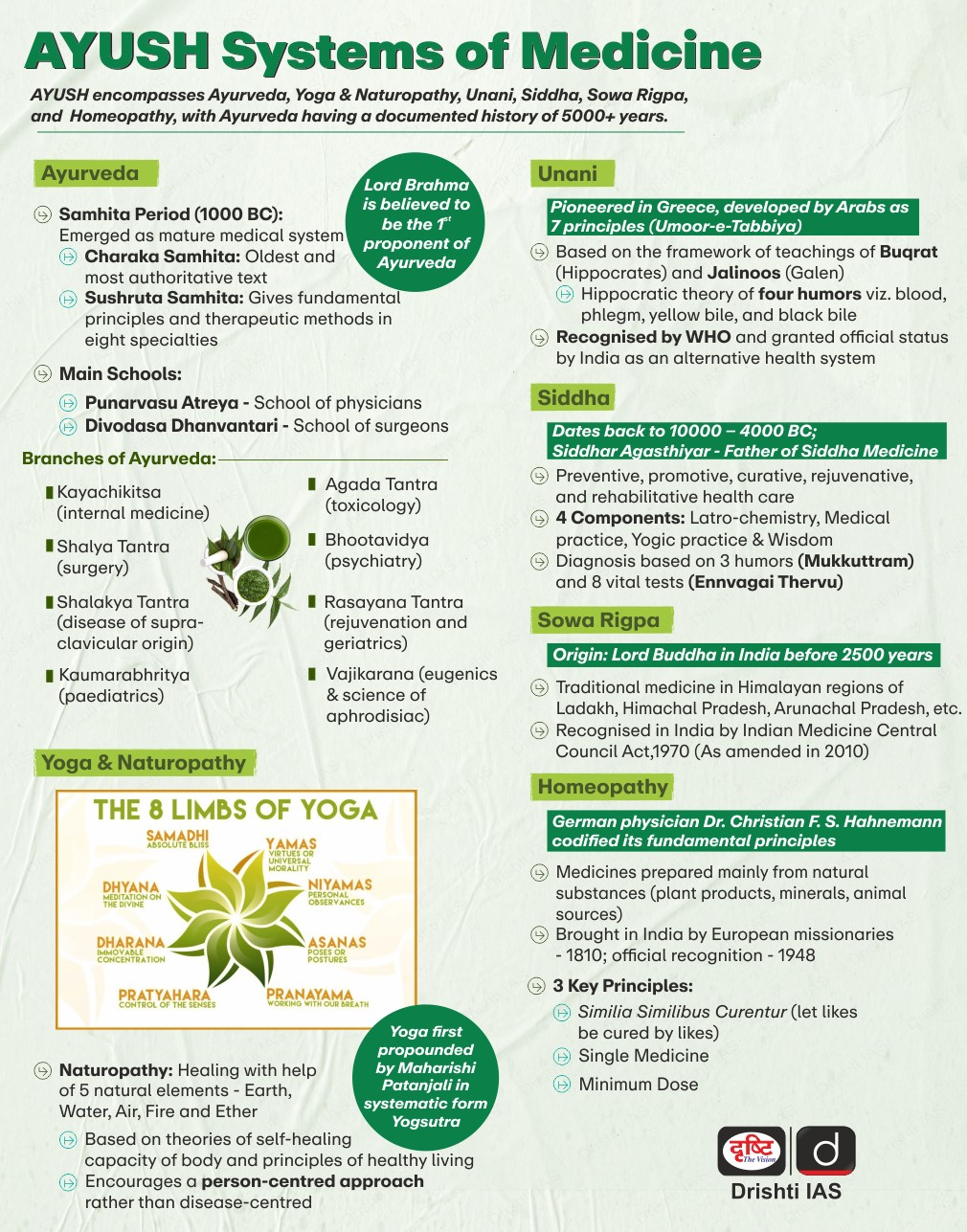Economy
World Food India 2025
For Prelims: Production Linked Incentive Scheme for Food Processing Industry , Pradhan Mantri Kisan Sampada Yojana, Food Safety and Standards Authority of India , National Agriculture Market
For Mains: Food Security and Value Addition, Food processing as an engine for rural employment and MSME growth.
Why in News?
World Food India 2025, India’s flagship food processing event, aims to position India as a ‘Global Food Hub’. The event concluded with the signing of Memoranda of Understanding (MoUs) worth over Rs 1 lakh crore, highlighting investments, innovations, and employment generation across multiple states.
World Food India
- WFI, conceptualized by the Ministry of Food Processing Industries (MoFPI), is India’s flagship food processing event. Since its first edition in 2017, followed by the 2nd in 2023, 3rd in 2024, and now the 4th edition in 2025.
- It has grown to showcase India as the “Food Basket of the World,” promoting investment, enhancing farm-to-fork linkages, encouraging sustainable food systems, and highlighting India’s diverse food culture.
What is the Landscape of the Food Processing Sector in India?
- Food Processing: It involves methods to transform raw agricultural, animal, or fish products into edible, commercially valuable finished or semi-finished products, altering their original physical properties.
- Levels of Processing:
- Primary processing: Basic cleaning, grading, and packaging of agricultural products.
- Secondary processing: Converting ingredients into edible products (e.g., milling wheat into flour).
- Tertiary processing: Creating ready-to-eat foods (e.g., baking bread from flour).
- Growth of India’s Food Processing Industry: India is largest producer of milk, onions and pulses, Second largest producer of rice, wheat, sugarcane, tea, fruits & vegetables and eggs.
- India’s agricultural and processed food exports reached USD 49.4 billion in 2024–25, with processed foods contributing 20.4% (up from 13.7% in 2014–15). The sector employs 2.23 million in registered units and 4.68 million in unregistered ones.
- Registered food business operators rose from 25 lakh to 64 lakh, supported by 24 mega food parks.
- Operation Greens and 225 Research and Development projects added 20 patents and 52 commercialized technologies.
- India’s Initiatives:
- Production Linked Incentive Scheme for Food Processing Industry (PLISFPI) aims to boost Indian brands internationally.
- Production Linked Incentive Scheme for Millet-based Products (PLISMBP) encourages Ready-to-Eat (RTE) and Ready-to-Cook (RTC) millet products, promoting value addition and millet consumption.
- Pradhan Mantri Kisan Sampada Yojana (PMKSY) creates modern infrastructure, efficient supply chains, and reduces post-harvest losses.
- PM Formalisation of Micro Food Processing Enterprises Scheme (PMFME) supports micro food processing units with technical, financial, and business assistance.
- Under the Make in India campaign, the government allows 100% Foreign Direct Investment (FDI) in food processing.
- The Mega Food Park Scheme provides integrated infrastructure for food processing, offering up to Rs 50 crore per project.
What are the Opportunities and Challenges in the Food Processing Sector in India?
|
Opportunities |
Challenges |
|
|
|
|
|
|
|
|
|
|
What Measures can Strengthen India’s Food Processing Sector?
- Cluster Development: Set up integrated food processing zones near farm hubs with shared infrastructure (cold storage, labs, effluent plants), ancillary industries (packaging, logistics), and seamless transport links to cut costs and boost rural–urban balance.
- Tech-Driven Supply Chain: Use blockchain for traceability, IoT for real-time monitoring, AI for demand forecasting, and drones/satellite imaging for crop assessment to cut wastage and improve efficiency.
- Financial Reforms: Create sector-specific credit schemes aligned with crop cycles, a credit guarantee fund for SMEs, and tax incentives to attract private equity and venture capital in food-tech.
- Quality Standards: Harmonize Indian norms with global benchmarks (Codex), introduce tiered certifications with market benefits, deploy mobile testing labs, and link quality-based pricing to National Agriculture Market (eNAM).
- Regulatory Simplification: Establish a single-window clearance and unified digital platform to cut delays and reduce compliance costs.
- Export Ecosystem: Develop export-specific zones with plug-and-play facilities, country-focused strategies, and a real-time market intelligence system; fully utilize PLISFPI funds to attract global majors.
- R&D Boost: Set up Food Innovation Labs, give weighted tax breaks for R&D, and build a national database of traditional food processing techniques for scaling up.
|
Drishti Mains Question: Q. The Indian food processing sector is expanding rapidly, yet its share in global processed food exports remains low. Analyse the reasons and suggest policy measures. |
Frequently Asked Questions (FAQs)
1. What is World Food India (WFI) 2025?
Ans: It is MoFPI’s flagship event to project India as a Global Food Hub, attracting ₹1 lakh+ crore investments and showcasing farm-to-fork linkages.
2. Why is the food processing sector significant for India?
Ans: It ensures food security, value addition, rural employment, MSME growth, and boosts exports (USD 49.4 bn in 2024–25).
3. Which key government schemes promote food processing?
Ans: PLISFPI, PLISMBP, PMKSY, PMFME, 100% FDI in food processing, and Mega Food Parks.
4. What are the main challenges in India’s food processing industry?
Ans: Post-harvest losses (~₹90,000 crore), infrastructure gaps, credit barriers for SMEs, and low global competitiveness.
5. What measures can strengthen the sector?
Ans: Cluster-based zones, tech-driven supply chains (AI, IoT, blockchain), credit reforms, Codex-aligned quality standards, single-window clearances, and R&D boost.
UPSC Civil Services Examination Previous Year Question (PYQ)
Prelims
Q. With what purpose is the Government of India promoting the concept of “Mega Food Parks”? (2011)
- To provide good infrastructure facilities for the food processing industry.
- To increase the processing of perishable items and reduce wastage.
- To provide emerging and eco-friendly food processing technologies to entrepreneurs.
Select the correct answer using the codes given below:
(a) 1 only
(b) 1 and 2 only
(c) 2 and 3 only
(d) 1, 2 and 3
Ans: (b)
Mains
Q. What are the challenges and opportunities of the food processing sector in the country? How can the income of the farmers be substantially increased by encouraging food processing? (2020)
Q.What are the reasons for the poor acceptance of a cost-effective small processing unit? How can the food processing unit be helpful to uplift the socioeconomic status of poor farmers? (2017)

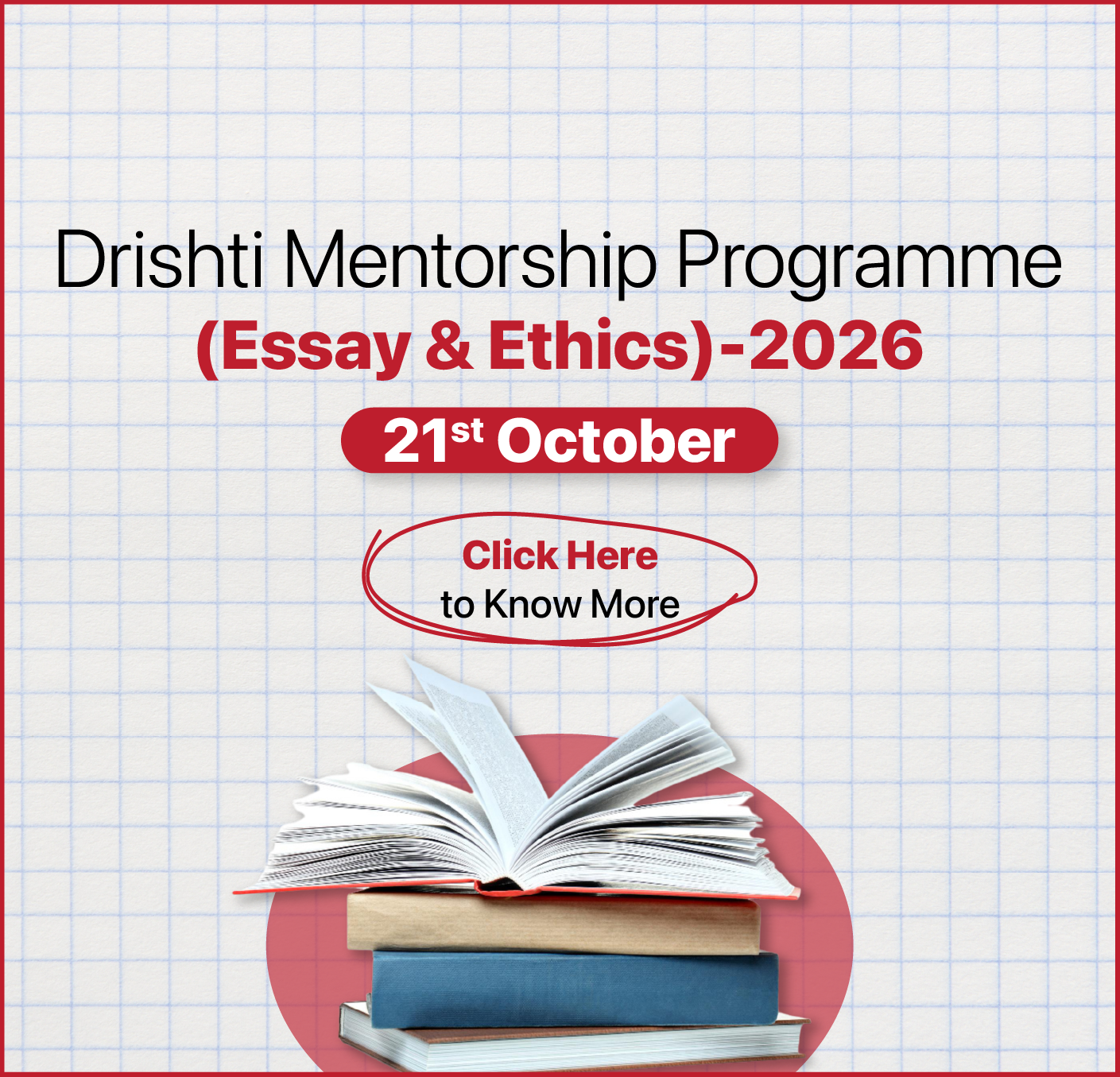
Disaster Management
Crowd Management in India
For Prelims: Hypoxia, Hypercapnia, NDMA, Disaster Management Act, 2005.
For Mains: Disaster management strategies for stampedes, NDMA guidelines, challenges and way forward.
Why in News?
A campaign rally for a Tamil actor-turned-politician in Karur, Tamil Nadu turned tragic, resulting in multiple deaths and injuries.
What is a Stampede?
- About: A stampede is a sudden, uncontrolled rush of people or animals, usually triggered by panic, fear, or excitement, occurring in crowded areas and often causing chaos and casualties.
- Stampede Incidence: The NCRB report ‘Accidental Deaths and Suicides in India’ states that from 2000 to 2022, 3,074 lives were lost in stampedes, with nearly 4,000 stampede incidents recorded over the past three decades.
- Cause of Death: A major cause of stampede deaths is the “black hole effect.” In dense crowds, physical forces create unpredictable "force chains" between bodies, so if one person falls, it creates a void, causing others to lose balance and fall.
- This domino effect leads to a pile-up, where people suffer compressive asphyxia under the weight of others.
- During a stampede, crushing pressure on the chest prevents proper lung movement, causing hypoxia (low oxygen) and hypercapnia (high carbon dioxide), both life-threatening.
What are the Key Causes and Impact of Stampedes in India?
|
Causes |
Impacts |
|
Immediate Triggers (rumors, sudden obstructions) |
Stampedes result in sudden fatalities, severe injuries, and psychological trauma, while also generating grief and anger. |
|
Systemic Failures (underestimating crowd size, poor crowd control, lack of preparedness) |
These failures erode public trust in authorities, invite repeated scrutiny of safety protocols, and make it harder to implement sustainable reforms. |
|
Behavioral Factors (panic spread, disregard for norms, star power, political influence) |
Behavioral triggers cause uncontrolled crowd movement leading to trampling deaths, spark social unrest, and stigmatize mass gatherings or festivals. |
|
Poor Infrastructure (narrow paths, blocked exits, slippery floors) |
Increases the risk of falls and chain-reaction stampedes, causes critical injuries, and leads to economic losses as public participation in events declines. |
Fatal Stampede Incidence in India
- Bengaluru (2025): During the victory celebrations of Royal Challengers Bengaluru’s, a massive crowd near M. Chinnaswamy Stadium in Bengaluru triggered a stampede, resulting in multiple deaths and injuries.
- Prayagraj (2025): A deadly stampede broke out during the Mahakumbh Mela 2025, leaving several dead and injured as millions of devotees thronged for the ritual bath.
- Tirupati (2025): A tragic stampede occurred at the token issuing counter in Tirupati, Andhra Pradesh, resulting in the multiple deaths and injuries.
- Hathras (2024): At least 121 people, mostly women and children, died in a stampede during a religious event in Uttar Pradesh.
- Mumbai Pedestrian Bridge (2017): 22 people were killed in a stampede during rush hour.
What are the Key Recommendations of NDMA for Crowd Management?
- Pre-Event Planning: Crowd estimation and capacity planning, safe site selection and layout design, and clear route planning with unobstructed entry, exit, and movement paths are essential to prevent stampedes.
- Structural Safety: Install barriers and railings in zig-zag queues, provide for virtual queue and approximate waiting time, ensure safe entry and exit points with outward-opening wide exits, and maintain effective communication systems and mobile connectivity to manage crowds.
- On-Ground Management: Implement crowd control and segregation with barricades, manage traffic and parking safely, use real-time crowd monitoring with CCTV and analytics.
- Building Awareness: Promote public awareness of risks and safe behavior, conduct training and drills for all agencies, and provide clear detailed Standard Operating Procedures (SOPs) for event management stakeholders.
- Emergency Response: Provide on-site medical aid, deploy Quick Reaction Teams (QRTs) for emergencies, and establish a clear Incident Command System for swift decision-making.
Global Best Practices in Crowd Management
- Saudi Arabia: After Hajj stampede, authorities used crowd simulations, restricted entry timings, and improved route planning.
- United Kingdom: In the UK, Wembley Stadium, London has been designed with multiple exits and advanced evacuation systems to handle 90,000 people safely.
- South Korea: In response to the Halloween stampede 2022, South Korea has deployed an advanced CCTV-based AI system to monitor crowd density in real time and provide timely warnings.
- Japan: Japan has implemented timed tickets and staggered entry measures to prevent sudden crowding.
How can Stampedes be Prevented in India?
- ICT Based Management: Use AI-powered density analytics with CCTV, drone-based aerial surveillance, and mobile network & Wi-Fi heat mapping to monitor crowd size, flow, and bottlenecks in real-time for pre-emptive intervention.
- Managing Human Behavior: Use visual and sound cues to calm crowds, train staff in crowd whispering to reduce tension, and provide safe spaces and pressure-release paths for emergencies.
- Build a Culture of Safety: Launch public safe crowding campaigns with influential figures, enforce mandatory organizer certification on crowd management, and use crowd-sourced monitoring via hashtags or apps to report overcrowding.
- Strengthen Accountability Framework: Enact a Crowd Safety Act defining organizer liability, require independent safety auditors for large events, and implement a national stampede database to learn from past incidents.
Conclusion
Stampedes in India are caused by a mix of triggers, systemic failures, behavioral factors, and poor infrastructure, resulting in high human, social, and economic costs. Effective prevention requires NDMA-compliant planning, crowd management, technology use, public awareness, and accountability frameworks to safeguard lives and ensure safer mass gatherings.
|
Drishti Mains Question: Q. Analyze the systemic and behavioral factors responsible for stampedes and suggest a multi-pronged strategy for ensuring safety at large public gatherings. |
Frequently Asked Questions (FAQs)
What is a stampede?
Ans: A stampede is a sudden, uncontrolled rush of people, often triggered by panic, fear, causing compressive asphyxia, hypoxia, and multiple deaths.
What are the main causes of stampedes in India?
Ans: Stampedes arise from immediate triggers, systemic failures, behavioral factors and poor infrastructure.
What are some global best practices in crowd management?
Ans: Countries like Saudi Arabia, UK, South Korea, and Japan use crowd simulations, AI CCTV monitoring, timed tickets, staggered entry, and multiple exits for safe mass gatherings.
What strategies can India adopt to prevent stampedes?
Ans: India can implement ICT-based crowd monitoring (AI, drones, Wi-Fi heat maps), manage human behavior, build a culture of safety, and strengthen accountability through legislation.
UPSC Civil Services Examination, Previous Year Questions (PYQs)
Mains
Q. Discuss the recent measures initiated in disaster management by the Government of India departing from the earlier reactive approach. (2020)

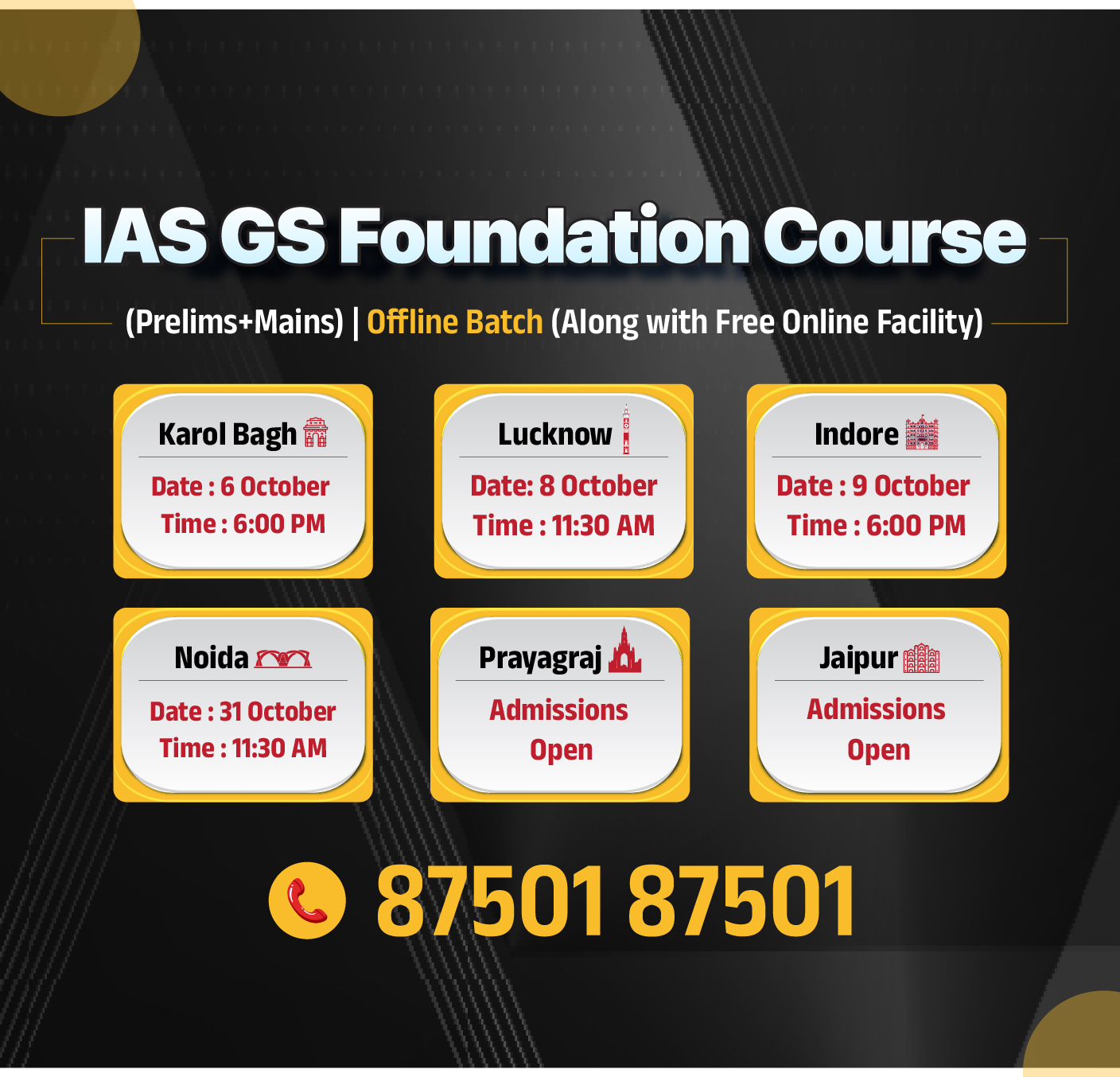
Facts for UPSC Mains
Provincial Citizenship
Why in News?
The term “provincial citizenship” is gaining traction in academic and policy debates, especially in light of domicile policies in States like Jharkhand, Jammu and Kashmir (J&K), and Assam.
Its ascendancy signals a shift toward more exclusionary, nativist politics that may contest the constitutional ideal of a singular, equal Indian citizenship.
What is Provincial Citizenship?
- About: Provincial Citizenship is an unofficial, politically constructed notion of belonging to a specific Indian state. It emerges from nativist politics, tied to the idea of being “native,” “indigenous,” “local,” or “son of the soil.”
- It is not part of the Constitution, but is used in politics to give special rights to "locals". This challenges the constitutional guarantee of a singular Indian citizenship under Articles 5–11.
- Reasons Behind Rise in Provincial Citizenship Demand:
- Economic Competition: Locals fear that migrants take away jobs and access to resources. Provincial Citizenship offers recognition to historically excluded communities and counters demographic pressure from large-scale migration.
- Cultural Anxiety: Migration brings perceived threats to language, tradition, and cultural homogeneity.
- Provincial Citizenship aims to safeguard the culture, and land of indigenous groups.
- Political Vacuum: There is no central law to regulate State-level domicile rules or to ensure uniformity in domicile policies across States.
- Judicial and Policy Safeguards:
- Supreme Court Interventions:
- In Sunanda Reddy v. State of Andhra Pradesh (1995), the court struck down 100% reservation for domiciles in postgraduate medical courses, emphasizing that reservations should not compromise merit and efficiency.
- In Dr. Pradeep Jain v. Union of India (1984), the SC ruled that reservations based on place of birth or residence are prima facie unconstitutional under Article 16(2).
- States Reorganisation Commission (SRC) (1955): Noted that domicile exclusions erode national unity.
- The constitutional framework currently sees citizenship as singular and national, regulated by the Citizenship Act, with non‑discrimination and mobility guarantees in fundamental rights.
- Supreme Court Interventions:
|
Aspect |
National Citizenship |
Provincial Citizenship |
|
Legal Status |
Constitutionally defined under Articles 5–11 |
Not legally recognized; a political and social construct |
|
Governing Law |
Citizenship Act, 1955 |
No formal law; based on State-level political practices |
|
Scope |
Applies uniformly across India |
Applies within specific States |
|
Rights Guaranteed |
Equal rights to reside, work, and access public services |
Prioritizes locals; may restrict access for internal migrants |
|
Constitutional Backing |
Supported by fundamental rights (Art. 14, 15, 16, 19) |
Often contradicts fundamental rights. |
|
Basis of Identity |
Indian nationality |
State-level identity (e.g., local, native, son of the soil) |
|
Federalism Impact |
Strengthens integration through uniform citizenship |
Boosts State autonomy, but strains Centre-State balance |
What are the Concerns Associated with Provincial Citizenship in India?
- Fragmentation of Citizenship: Undermines the idea of one equal Indian citizenship by creating layered identities.
- Constitutional Tensions: As noted by SRC, 1955, domicile-based rules restrict jobs, education, and welfare, conflicting with Articles 14 (equality), 15 (no discrimination), 16 (equal opportunity in public employment), and 19 (freedom of movement and residence).
- Exclusion of Migrants: Internal migrants struggle to access jobs, housing, education, and welfare in host States.
- Rise of Nativist Politics: Encourages “sons of the soil” movements, outsider hostility, and regionalism.
- Judicial Burden: Courts face a flood of litigation over domicile and reservation policies, further burdening the already overburdened judiciary.
- Economic Slowdown: Restricting migrant labour reduces workforce mobility, affecting productivity and urban economies.
What Reforms are Needed to Balance State Autonomy with National Citizenship?
- Parliamentary Legislation on Domicile: SRC 1955 recommended that domicile rules should be replaced by appropriate Parliamentary legislation. This ensures States to not override fundamental rights or restrict core national citizenship entitlements.
- Strengthen Migrant Protections: Expand portability of welfare benefits beyond food (One Nation One Ration Card) to healthcare, education, housing, and employment.
- Ensure internal migrants enjoy equal rights irrespective of their State of residence through initiatives like e-Shram portal which enables social security for unorganised workers.
- Balanced Federalism: Allow States limited scope for residence-based benefits and prevent States from denying core rights under Articles 14, 15, 16, and 19.
- Election Commission Oversight: Regulate “sons of the soil” electoral campaigns to prevent xenophobic politics. Integrate inclusive safeguards into party recognition and funding rules.
- Public Awareness & Inclusion: Launch campaigns highlighting migrants’ contribution to urban economies.Counter xenophobia and promote social integration.
Conclusion
Provincial citizenship may serve local insecurities but risks fragmenting India’s unity, equality, and fraternity. Guided by the Constitution and SDG 10 (Reduced Inequalities), India must reaffirm the principle of one nation, one citizenship, protecting diversity while ensuring inclusivity for all citizens, regardless of where they come from.
|
Drishti Mains Question: Q. Evaluate the concept of provincial citizenship in India and discuss its implications for national unity and equality under the Constitution. |
Frequently Asked Questions (FAQs)
What is Provincial Citizenship?
Ans: It is an unofficial, politically constructed notion of belonging to a specific Indian state. It emerges from nativist politics, tied to the idea of being “native,” “indigenous,” “local,” or “son of the soil.”
How does Provincial Citizenship differ from National Citizenship in India?
Ans: National Citizenship is constitutionally guaranteed under Articles 5–11 with uniform rights across India, while Provincial Citizenship is an unofficial, domicile-based construct privileging locals within States.
Which Constitutional provisions are violated by domicile-based policies?
Ans: Domicile rules often conflict with Articles 14, 15, 16, and 19, which guarantee equality, non-discrimination, equal employment opportunities, and freedom of movement.
Why are States increasingly adopting Provincial Citizenship policies?
Ans: Driven by economic competition for jobs, cultural anxieties over migration, and a lack of central law on domicile, States use it as a tool for nativist and electoral politics.
UPSC Civil Services Examination, Previous Year Questions (PYQs)
Prelims
Q. With reference to India, consider the following statements: (2021)
- There is only one citizenship and one domicile.
- A citizen by birth only can become the Head of State.
- A foreigner once granted citizenship cannot be deprived of it under any circumstances.
Which of the statements given above is/are correct?
(a) 1 only
(b) 2 only
(c) 1 and 3
(d) 2 and 3
Ans: (a)


Economy
H-1B Visa Fee Hike
For Prelims: H-1B visa, STEM, Remittances,2+2 Ministerial Dialogue, General Agreement on Trade in Services (GATS), WTO, AI, Quantum Computing.
For Mains: Impact of global protectionism on Indian IT, and strategies for managing external economic shocks while boosting domestic skill development and innovation.
Why in News?
The U.S. President has signed an executive order mandating companies to pay USD 100,000 per H-1B visa, effective from 21st September, with a duration of 12 months unless extended. This fee increase is expected to significantly affect Indian IT firms, which file the majority of H-1B petitions.
What is the H-1B Visa Program?
- About: The H-1B visa is a temporary, non-immigrant visa that enables US companies to hire skilled foreign professionals in specialized fields such as STEM and IT, requiring at least a bachelor’s degree.
- Introduced in 1990, it was designed to help employers address skill shortages when qualified US workers were not available.
- Validity Period: The H-1B visa is valid for up to six years. After this, holders must either leave the US for 12 months before reapplying or seek permanent residency (Green Card).
- Share of Indians: Indians dominate H-1B approvals, making up 70%+ annually since 2015. China consistently ranks second, with 12–13% of approvals since 2018.
- Quotas and Exemptions: Each fiscal year, there is a cap of 65,000 new visas. An additional 20,000 visas are available for those with a US master’s degree or higher.
- Cap exemptions apply for applicants continuing employment or working with universities, affiliated nonprofits, and government research bodies.
- Benefits of H-1B Visa for Indians:
- Dominance in Tech and STEM Fields: Indians make up over 70% of H-1B recipients, dominating IT and STEM roles, with more than 80% of computer-related jobs going to them, making them vital to US tech companies.
- Medical and Healthcare Contribution: Indians constitute about 22% of international medical graduates in the US, representing 5–6% of all US physicians. H-1B holders play a key role in hospitals and surgical units, addressing healthcare staffing shortages.
- Educational and Career Pathways: Many Indian students use H-1B visas to work in the US after higher education, boosting career prospects. The visa also provides global exposure, enhancing skills and employability.
- Strategic and Industry Benefits: The program supports Indian IT sector growth by enabling deployment in high-revenue US projects, sustaining over half its revenue.
What Can be the Impact of H-1B Visa Fee Hike on India?
- Impact on Indian Professionals: The reduction in H-1B visas will limit opportunities for Indian tech professionals, restricting access mainly to senior specialized roles and blocking career growth for early to mid-level talent.
- Existing visa holders may also face job insecurity as costly renewals and transfers deter employers.
- Impact on Indian IT Companies: A USD 100,000 fee per employee would undermine the cost advantage of Indian IT firms like Infosys, TCS, and Wipro, causing revenue losses and reduced US contracts.
- To adapt, they would need to shift toward local hiring, greater offshoring, and increased use of automation/AI.
- Impact on Indian Economy: A drop in H-1B visa holders from India could cut remittances by up to USD 400 million annually, adding pressure on the rupee, which is already among Asia’s weakest-performing currencies.
- Impact on India-US Relations: The H-1B restrictions could strain a cornerstone of the India-US strategic partnership, impacting a key economic and tech interest.
- Indian professionals may diversify globally, seeking opportunities in Canada, Australia, and Europe.
- Impact on US Companies: It could harm US companies like Amazon, Microsoft, and Google by exacerbating STEM talent shortages, raising wages and operational costs, and forcing competition for a limited domestic workforce.
Other US Nonimmigrant Visa Categories
O- Foreign national with extraordinary ability in Sciences, Arts, Education, Business or Athletics.
H-2A- Temporary agricultural worker.
H-2B- Temporary worker performing other services or labor of a temporary or seasonal nature
B-2- Tourism, vacation, pleasure visitor.
V- Nonimmigrant Visa for Spouse and Children of a Lawful Permanent Resident.
What Strategies can India Adopt to Address the H-1B Visa Fee Hike?
- Diplomatic & Government-Led Measures: Use forums like the India-US Trade Policy Forum and 2+2 Ministerial Dialogue to show how the H-1B fee hike harms US innovation and Indo-US strategic ties.
- Consider filing a dispute at the WTO, arguing the hike is a protectionist measure unfairly targeting Indian IT companies, potentially violating the General Agreement on Trade in Services (GATS).
- Strategic Shift for Indian IT Companies: They can accelerate the ‘localization’ model to hire more US-based talent and boost offshore delivery using AI, cloud, and telepresence technologies.
- Additionally, Indian IT companies should diversify global markets by expanding in Europe, Japan, Australia, and the Middle East to reduce US dependency.
- Skill Development: India should upskill professionals in high-value areas like AI, cybersecurity, and quantum computing, where higher visa costs remain justifiable for US clients.
- Simultaneously, promoting reverse migration and brain gain can attract talent back to India, strengthening the domestic tech ecosystem.
- Strengthen Advocacy: Leverage the Indian diaspora to advocate for rational immigration reforms, emphasizing the contribution of Indian talent to the US economy.
Conclusion
The proposed H-1B visa fee hike represents a significant protectionist shift, threatening a cornerstone of India-US economic ties. While straining US innovation and Indian IT revenues, it may ultimately accelerate India's strategic pivot towards skill development, market diversification, and strengthening its own domestic tech ecosystem.
|
Drishti Mains Question: Q. Critically analyze the role of skilled migration in global innovation and talent distribution, citing the H-1B program. |
Frequently Asked Questions (FAQs)
What is the H-1B visa?
Ans: The H-1B visa is a temporary US work visa for skilled professionals in STEM/IT fields.
How will the proposed H-1B fee hike impact Indian IT companies?
Ans: A USD 100,000 per visa fee threatens the cost advantage of firms like Infosys, TCS, and Wipro, reducing US contracts, encouraging local hiring.
What measures can India adopt to mitigate challenges from the H-1B visa fee hike?
Ans: India can engage diplomatically via Trade Policy Forums/WTO, promote domestic skill development in AI, cybersecurity, and encourage reverse migration and brain gain.
UPSC Civil Services Examination Previous Year Question (PYQ)
Mains
Q. Indian diaspora has scaled new heights in the West. Describe its economic and political benefits for India. (2023)
Q. Indian Diaspora has an important role to play in South East Asian countries’ economy and society. Appraise the role of Indian Diaspora in South-East Asia in this context. (2015)


Rapid Fire
India’s First Cross-Border Rail Links with Bhutan
India has announced the first-ever railway links with Bhutan, namely the Kokrajhar–Gelephu (Assam) and Banarhat–Samtse (West Bengal) lines, totaling 89 km, marking a milestone in bilateral connectivity and regional integration.
- Gelephu and Samtse: Gelephu and Samtse are key export-import hubs in Bhutan along the 700-km India-Bhutan border. Gelephu is being developed as "Mindfulness City,".
- Samtse is being developed as an industrial town by the Government of Bhutan. Enhancing connectivity between these towns and India will significantly boost India-Bhutan trade.
- Strategic Importance: These railway links reinforce India’s Neighbourhood First Policy, counters China’s growing influence in South Asia, and deepens trust-based partnership.
- For Bhutan, seamless rail connectivity to India provides access to 1.5 lakh km of the Indian Railways network.
- Since India is Bhutan’s largest trading partner, handling 80% of its total trade, this link will enhance Bhutan’s access to global markets via Indian ports while also boosting tourism, industrial growth, people-to-people ties, and smooth movement of goods.
- India’s Developmental Assistance to Bhutan: India pledged Rs 10,000 crore for Bhutan’s 13th Five-Year Plan (2024–2029) (double of the 12th Plan).
- An integrated check post was inaugurated at Darranga, Assam, to facilitate the movement of third-country nationals, including those from Bhutan. Bhutan is also set to benefit from the Jogighopha Inland Waterways Transport Terminal.
- The two nations have collaborated on five major hydropower projects — Chukha, Tala, Mangdechhu, Kurichhu, and the recently completed Punatsangchhu II.
|
Read more: India-Bhutan Relations |

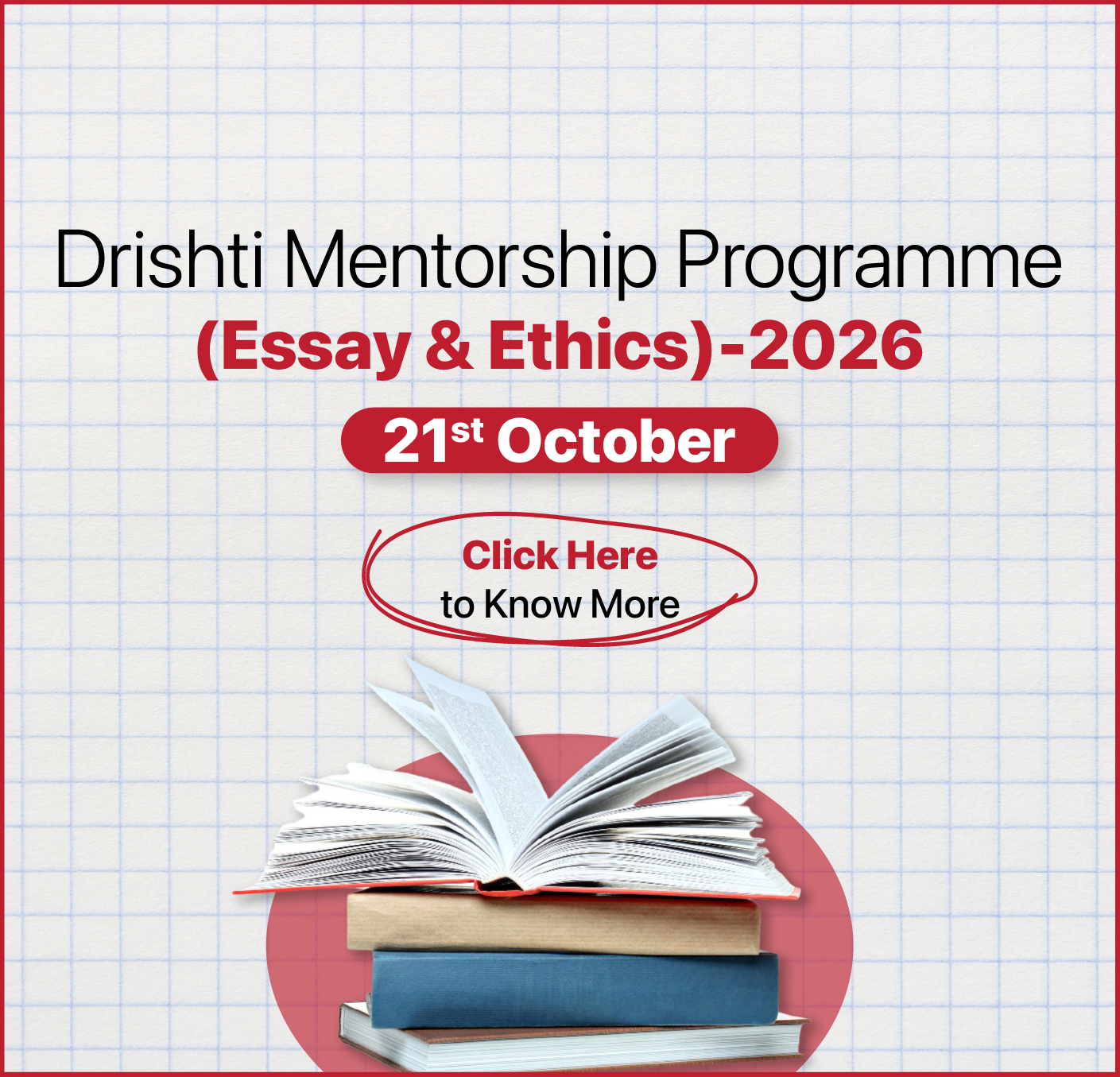
Rapid Fire
Siphon-powered Desalination
A new siphon-based thermal desalination system developed by Indian Institute of Science (IISc) transforms seawater into potable water.
- It is faster, cheaper, and more efficiently than traditional solar stills, addressing India’s water-stress challenges.
- Thermal desalination is a process that uses heat to evaporate pure water from saltwater, mimicking the natural water cycle by leaving salts behind and condensing the vapor into freshwater.
- Traditional solar stills, which copy nature’s water cycle to clean water, have two main problems: salt deposits that block water flow and size limits, since wicking materials can lift water only about 10–15 cm, reducing output.
Siphon-Powered Desalination System
- About: It uses the principle of siphon (gravity-driven flow through a tube or wick).
- It uses a composite siphon (fabric wick + grooved metallic surface) to draw salty water from a reservoir, while gravity ensures smooth continuous flow. The siphon flushes out salts before crystallization, preventing buildup.
- Water spreads as a thin film, evaporates, and condenses efficiently, producing over 6 liters of clean water per m² per hour under sunlight, several times higher than conventional solar stills.
- Significance: Siphon-Powered desalination unit is low-cost, scalable, and sustainable, built from simple materials like aluminum and fabric.
- It runs on solar or waste heat, works in off-grid and coastal regions, and can treat high-salinity water (up to 20%) without clogging, making it a breakthrough in brine management.
- Waste heat to power (WHP) is the process of capturing heat discarded by an existing thermal process and using that heat to generate power.
|
Read more: Desalination Plants |

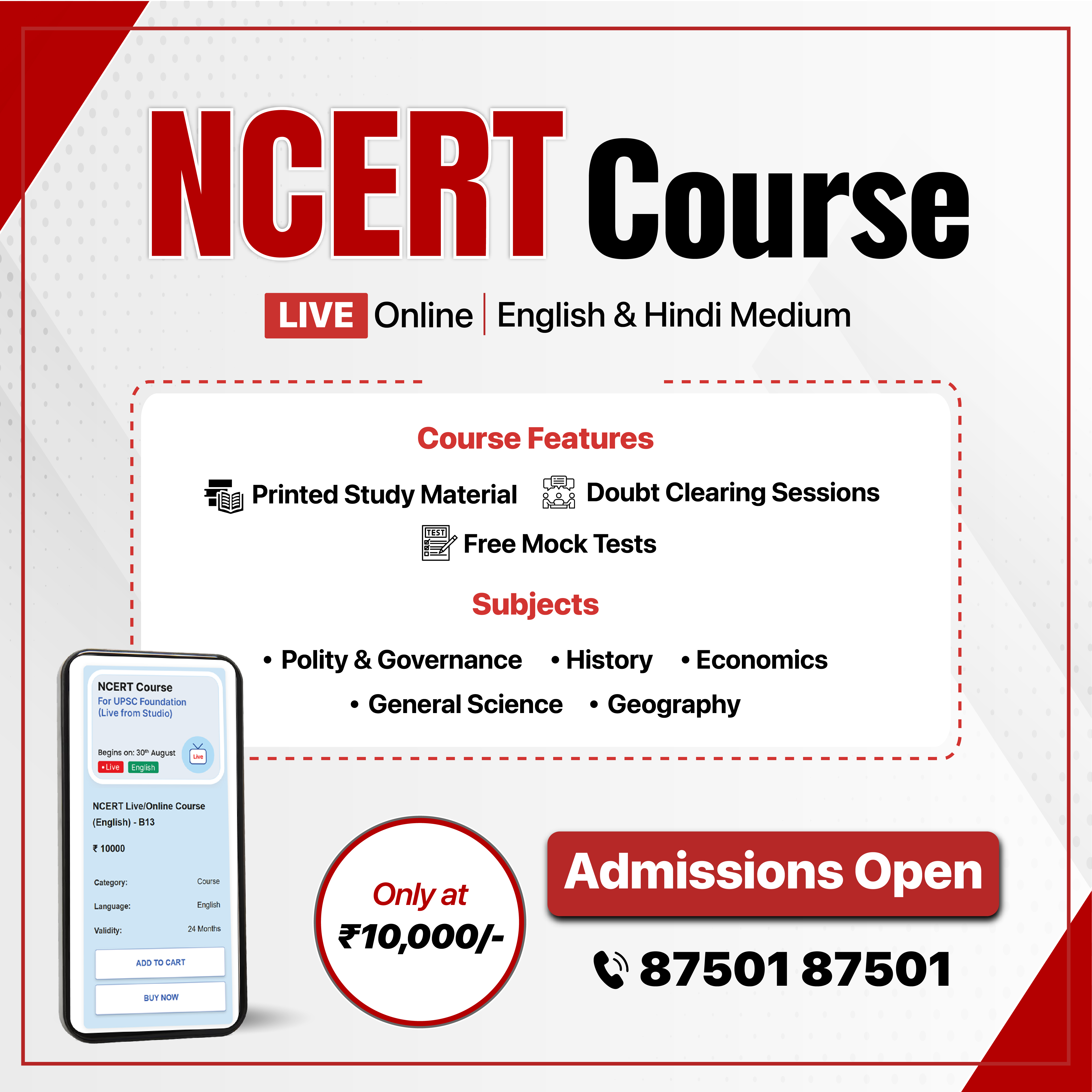
Place In News
Paatalkot Valley
First Health Centre was inaugurated in the remote tribal valley of Paatalkot in Chhindwara district (MP), marking a significant step towards last-mile delivery of government services.
- Central government initiatives like Pradhan Mantri Janman Yojana, Dharti Abba Janjatiya Gram Utkarsh Abhiyan, and Aadi Karmayogi Abhiyan have improved roads, housing, drinking water, electricity, and education.
Paatalkot Valley
- About: It is a horseshoe-shaped valley of 79 sq km surrounded by hills.
- Doodhi river (tributary of River Narmada) flows in the valley.
- It is home to Gond and Bharia tribes, classified as Particularly Vulnerable Tribal Groups (PVTGs).
- Geology: The valley features ancient rocks from the Archaean era (around 2500 million years old). The rock composition includes:
- Granite gneiss, green schists, and quartz.
- Gondwana sediments like conglomerate sandstone, shales, and carbonaceous shales.
- Shilajit, a composite carbon substance, is found in patches in the upper zones.
- Culture & Tourism: It hosts an annual Satpuda Adventure Sports Festival in October, promoting tourism and local engagement.
|
Read More: PM Janjatiya Unnat Gram Abhiyan |

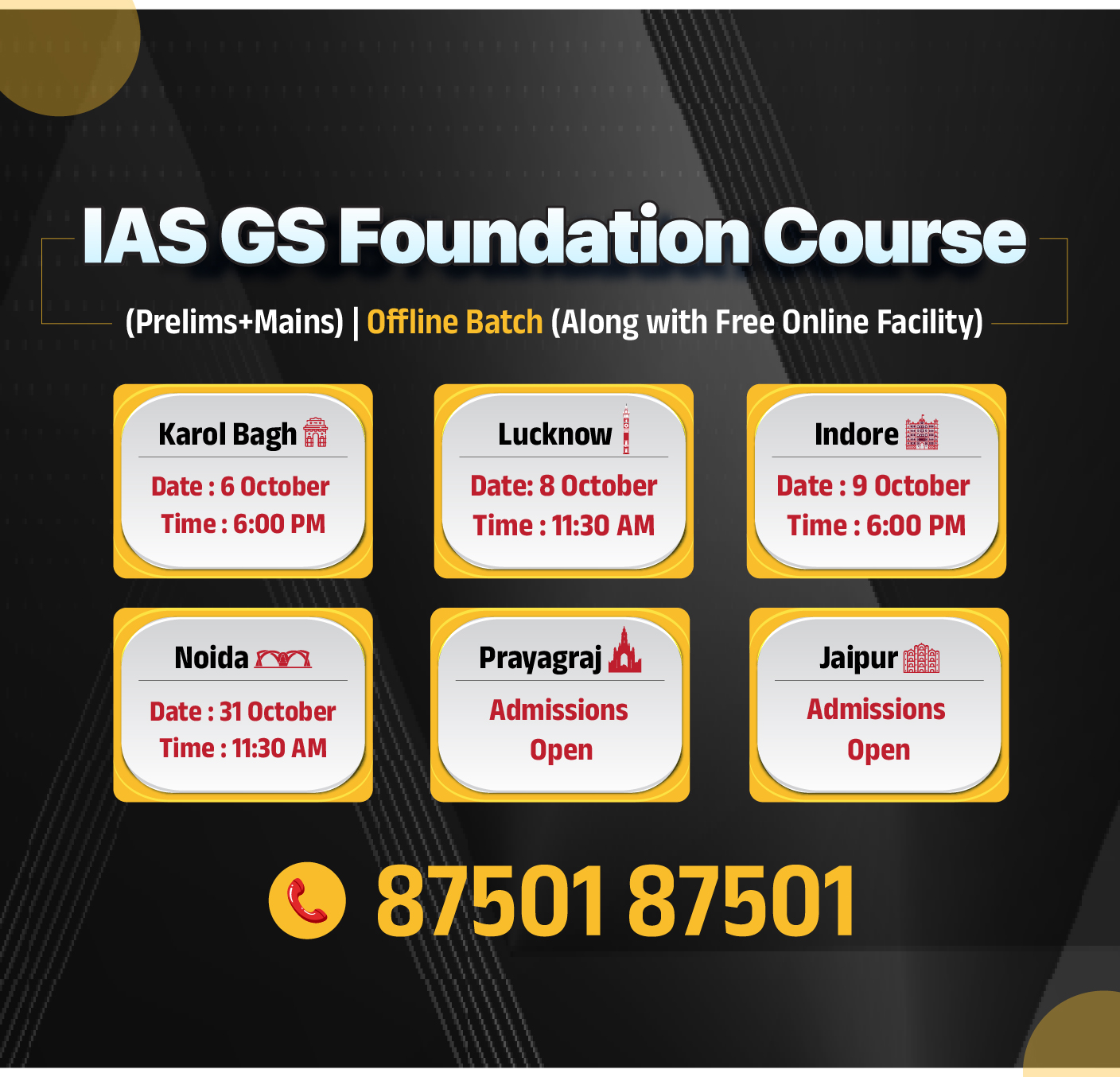
Rapid Fire
India's First Integrative Oncology Research and Care Centre
The Ministry of Ayush inaugurated the first-of-its-kind Integrative Oncology Research and Care Centre (IORCC) at the All India Institute of Ayurveda (AIIA), Goa, on the 10th National Ayurveda Day.
- It is the first multidisciplinary centre in India integrating Ayurveda, Yoga, Physiotherapy, Diet Therapy, Panchakarma, and modern oncology under one roof.
- The initiative aligns with the National Health Policy's focus on integrating traditional and modern medicine systems.
- National Ayurveda Day is celebrated on 23rd September, symbolizing balance in nature, reflecting Ayurveda’s emphasis on mind, body, and spirit equilibrium.
- Theme: Ayurveda for People & Planet.
|
Read More: Ayurveda Day 2024 |

